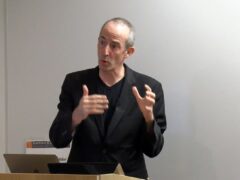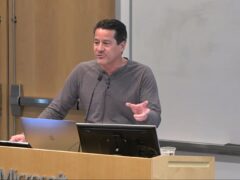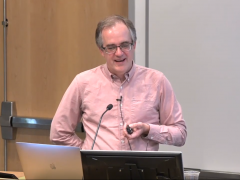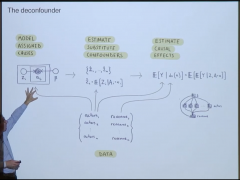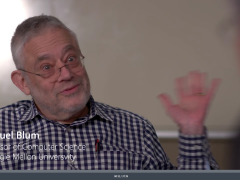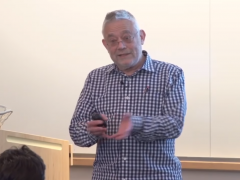Towards a Conscious AI: A Computer Architecture inspired by Neuroscience
Thanks to major advances in neuroscience, we are on the brink of a scientific understanding of how the brain achieves consciousness. This talk will describe neuroscientist Bernard Baars’ Global Workspace Model (GWM) of the brain, its implications for understanding consciousness, and a novel computer architecture that it inspires. The Model gives insight for the design of machines that truly experience (as opposed to simulate) the ecstasy of joy and the agony of pain. It also gives a reasonable explanation of free will in a completely deterministic world.
This work is joint between Manuel Blum and Lenore Blum.
View presentation slides here: https://www.microsoft.com/en-us/research/uploads/prod/2018/11/A-Computer-Architecture-inspired-by-Neuroscience-SLIDES.pdf
发言人详细信息
Manuel Blum, the Bruce Nelson University Professor of Computer Science at Carnegie Mellon University, is a pioneer in the field of theoretical computer science and the winner of the 1995 Turing Award in recognition of his contributions to the foundations of computational complexity theory and its applications to cryptography and program checking, a mathematical approach to writing programs that check their work. He was born in Caracas, Venezuela, where his parents settled after fleeing Europe in the 1930s, and came to the United States in the mid-1950s to study at the Massachusetts Institute of Technology. While studying electrical engineering, he pursued his desire to understand thinking and brains by working in the neurophysiology laboratory of Dr. Warren S. McCulloch and Walter Pitts, then concentrated on mathematical logic and recursion theory for the insight it gave him on brains and thinking. He did his doctoral work under the supervision of Artificial Intelligence pioneer Marvin Minsky, and earned a Ph.D. from MIT in mathematics in 1964. Blum began his teaching career at MIT as an assistant professor of mathematics and, in 1968, joined the faculty of the University of California at Berkeley. He accepted his present position at Carnegie Mellon in 2001. Blum has supervised the theses of 35 doctoral students who now pepper almost every major computer science department in the country. The many ground-breaking areas of theoretical computer science chartered by his academic descendants are legend.
- 日期:
- 演讲者:
- Manuel Blum
- 所属机构:
- Carnegie Mellon University
-
-

Adith Swaminathan
Principal Researcher
-
-
系列: MSR AI Distinguished Lectures and Fireside Chats
-
-
Frontiers in Machine Learning: Fireside Chat
Speakers:- Christopher Bishop,
- Peter Lee,
- Sandy Blyth
-
Learning over sets, subgraphs, and streams: How to accurately incorporate graph context
Speakers:- Debadeepta Dey,
- Paul Bennett,
- Sean Andrist
-
-
-
-
Fireside Chat with Anca Dragan
Speakers:- Anca Dragan and Eric Horvitz
-
Conversations Based on Search Engine Result Pages
Speakers:- Maarten de Rijke
-
-
The Ethical Algorithm
Speakers:- Michael Kearns
-
Fireside Chat with Stefanie Jegelka
Speakers:- Alekh Agarwal
-
Fireside Chat with Peter Stone
Speakers: -
Efficient Robot Skill Learning: Grounded Simulation Learning and Imitation Learning from Observation
Speakers:- Debadeepta Dey
-
-
Building Neural Network Models That Can Reason
Speakers:- Christopher Manning
-
Fireside Chat with David Blei
Speakers: -
The Blessings of Multiple Causes
Speakers:- David Blei
-
As We May Program
Speakers:- Peter Norvig
-
Fireside Chat with Peter Norvig
Speakers:- Eric Horvitz,
- Peter Norvig
-
An Optimization-Based Theory of Mind for Human-Robot Interaction
Speakers:- Anca Dragan
-
Fireside Chat with Manuel Blum
Speakers: -
Towards a Conscious AI: A Computer Architecture inspired by Neuroscience
Speakers:- Adith Swaminathan
-
Fireside Chat with Dario Amodei
Speakers: -
-
Super-Human AI for Strategic Reasoning
Speakers:- Adith Swaminathan








